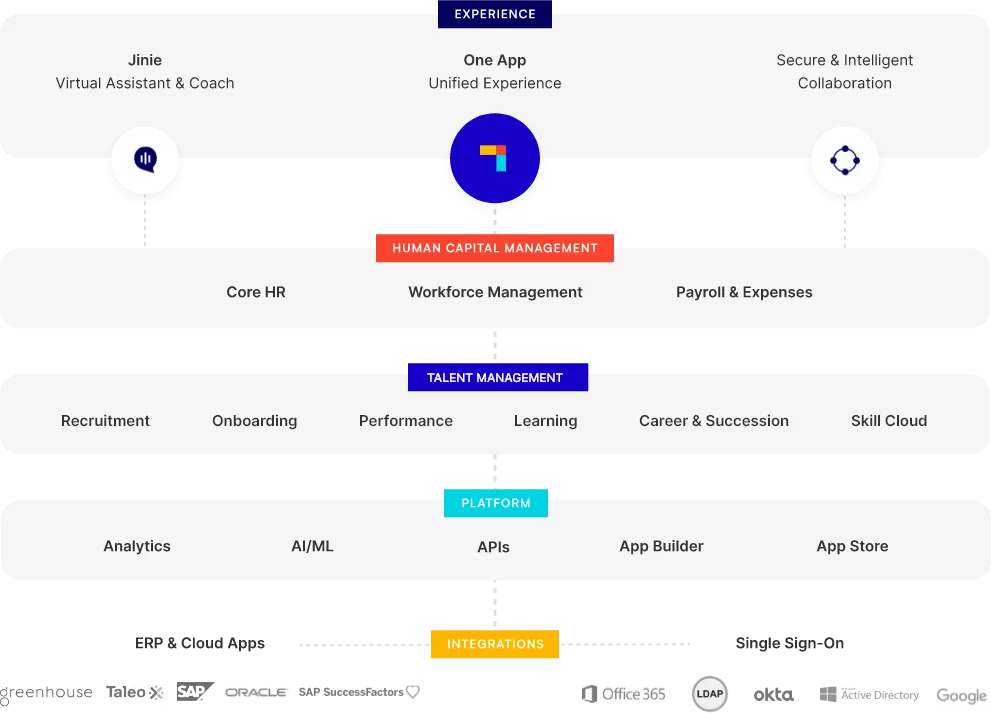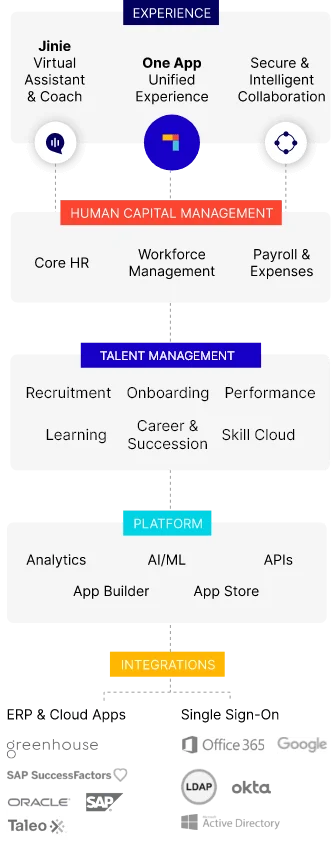A new report by MasterCard highlights a growing opportunity for businesses in the Middle East. The report suggests that economic reforms and efforts to diversify away from oil will attract more investment. This investment is expected to boost the non-oil sector, creating jobs and increasing consumer spending within the region.
What’s more, the findings of the Hays GCC salary guide for 2024 show that the economic environment in the Gulf region is strong. Signs point to further growth, with 67% of employers in the region wanting to grow their organisation’s headcount.
Companies need to adopt a strategic approach to performance management to thrive in this dynamic business environment. Leaving the traditional approach behind, agile performance management is designed for a volatile, dynamic, complex world of work that requires increased collaboration.
By creating a plan that considers cultural nuances, organisations can create a thriving work environment that fuels employee engagement and business success. Here is a guide to building and nurturing a performance management plan tailored to the Middle East.
Suggested Read: Performance Management Process: Key Stages and Things to Avoid
The Cultural Lens: Understanding Performance Management in the Middle East
Understanding the cultural fabric of the Middle East is crucial for crafting an effective performance management system. Here is a brief breakdown of key cultural influences.
- Collectivism: Middle Eastern cultures often prioritise group success over individual achievements. Performance management should acknowledge team contributions alongside individual performance. For example, if a sales team consistently exceeds targets, the manager can acknowledge the team’s efforts before praising the top performers.
- Respect for Hierarchy: Respect for authority figures is deeply ingrained. Feedback should be delivered in a way that upholds the manager’s position while offering constructive guidance. For example, when providing feedback to an engineering team leader about project design, the manager can start by recognising the engineer’s expertise. After that, they can suggest alternative approaches, framing them as improvements for the overall project.
- Indirect Communication: Direct criticism can be perceived as disrespectful. Focus on providing positive reinforcement and constructive feedback. These are best framed as suggestions for improvement. For example, if a marketing manager notices a decline in a colleague’s presentations, he can ask questions about the overall workload and offer to brainstorm ideas together.
- Relationship-Building: Strong personal relationships are essential for motivation. Regular check-ins and open communication build trust and foster a sense of belonging. For example, regular one-on-one meetings with team members could be held during which work and personal goals and challenges are discussed. This would build trust and a sense of camaraderie within the team.
Realising Impact: Benefits of Tailored Performance Management in the Middle East
By tailoring a performance management system to the regional culture, organisations stand to gain many benefits. The main advantages are driving employee engagement and enhancing organisational performance.
Driving Employee Engagement through Culturally Aligned Practices
- Focus on Development: Middle Eastern employees often value opportunities for learning and career progression, which can be provided through mentorship programs and training. For example, Arabic-language leadership training can be offered as part of a high-potential employee development program.
- Regular, Two-Way Communication: Frequent feedback sessions, both formal and informal, create a sense of partnership and trust with managers. For example, there could be a system of skip-level meetings or anonymous surveys to gather employee feedback.
Enhancing Organisational Agility and Performance
- Clear Goal Setting: Collaborative goal setting that aligns individual goals with departmental and organisational objectives ensures everyone works towards a shared vision. The future of a goal-setting process should be business-centric and data-driven. For example, when open dialogue is encouraged during goal-setting discussions, employees understand the bigger picture and their role in achieving it.
- Performance Metrics with Regional Relevance: Metrics that consider cultural factors provide a more accurate picture of employee contributions. For example, in a sales role focused on building long-term client relationships, consider including customer retention rates alongside pure sales numbers.

From Theory to Practice: Steps to Develop a Middle East Performance Management Plan
Here is an approach to crafting a performance management plan that works in the Middle East:
- Conduct a Cultural Audit and Needs Assessment: Evaluate existing practices and identify areas for improvement. These can involve surveys, focus groups, or interviews with employees and managers. Consider the cultural context and how it might be impacting your current system’s effectiveness.
- Establish Clear Performance Metrics Rooted in Regional Realities: Develop metrics relevant to your organisation’s and the Middle Eastern market’s specific context. Involve employees in the process to ensure the metrics are clear, achievable, and culturally appropriate.
Making it Work: Implementing and Sustaining Performance Management in the Middle East
The primary three steps in implementing a performance management plan in the region are effective communication, culturally competent training, and continuous improvement.
In this way, organisations can create a system that benefits both employees and the organisation as a whole.
Communicating the Plan: Cultural Considerations and Best Practices
It is crucial to communicate the performance plan effectively while considering cultural nuances. This involves translating all relevant materials into the local language to ensure clarity and accessibility. Highlight the benefits for both employees and the organisation.
Emphasise career development opportunities, recognition for efforts, and pathways for advancement for employees. For the organisation, show how improved performance and efficiency will drive success.
For example, when introducing a new performance management system in a Middle Eastern company, the HR team can hold a series of in-person meetings with small groups of employees. These meetings can be conducted in the local language, with culturally relevant examples to illustrate how the system will benefit everyone.
Training and Development: Building Cultural Competency
Managers should be trained to provide feedback that is both constructive and culturally sensitive. This involves understanding local customs, values, and communication styles.
Implement training programs that include role-playing exercises and workshops. These activities should focus on effective communication techniques, conflict resolution, and the importance of empathy in leadership.
Example: The management team can participate in workshops designed to build cultural competency. They can practice giving feedback in culturally appropriate ways, such as balancing directness with respect and acknowledging an employee’s achievements before discussing areas for improvement.
Ongoing Monitoring and Improvement
Performance management should be viewed as a continuous process rather than a one-time initiative. Regularly assess the effectiveness of the plan by collecting feedback from both employees and managers.
Conduct surveys, hold focus groups, and use performance metrics to gather insights. Use this data to make adjustments to the plan, ensuring it remains relevant and effective.
Example: Every quarter, the HR department can conduct anonymous surveys and hold focus groups with employees and managers to gather feedback on the system. Based on the feedback, the plan can be adjusted, for instance, by providing more frequent recognition or monthly awards.
Conclusion
Performance management in the Middle East requires an approach that respects cultural values. By tailoring your plan to the specific context, you can create a system that drives employee engagement, enhances organisational agility, and unlocks lasting success.
To discover more, get in touch with the performance management specialists at PeopleStrong today.
How can we ensure effective communication of a performance management plan to employees in the Middle East?
To make the plan relevant, it is essential to translate all materials into the local language and use culturally appropriate communication methods, such as face-to-face meetings and community gatherings. To make the plan relevant, emphasise the plan’s benefits for both employees (such as career development and recognition) and the organisation (such as improved performance and efficiency).
What training methods are effective for building cultural competency among managers in the Middle East?
Effective training methods include comprehensive workshops and role-playing exercises that focus on culturally sensitive communication techniques. These training sessions should cover active listening, empathetic feedback, and conflict resolution strategies tailored to local customs and values. These will ensure that managers can provide constructive feedback in a way that respects cultural norms.
How can we maintain the effectiveness of a performance management system over time in the Middle East?
Maintaining effectiveness requires viewing performance management as an ongoing process. That means evaluating the system through surveys, focus groups, and performance metrics. Gathering feedback from employees and managers allows for continuous adjustments and improvements.










